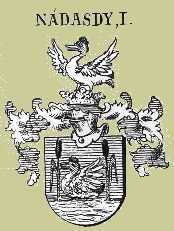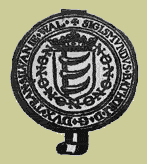
A Life in Retrospect

The Early Years
Though it is not stated exactly when, occurring sometime after she turned six and before eleven, a band of gypsies were invited to her home at Ecsed Castle to provide entertainment at the court. During their stay, one of their number was accused of selling his children to the Turks. He was found guilty and his judges sentenced him to death. "Elizabeth recalled his long cries in the night, bemoaning his upcoming demise, which evidently made a lasting impression on her. At dawn, Elizabeth escaped from the surveillance of her governess and ran outside the castle to witness the punishment. There she saw a horse held fast to the ground as some soldiers slit open its belly. Three of the soldiers then grabbed the guilty gypsy and shoved him inside the horse's belly until only his head stuck out of the dying animal. Another soldier armed with a huge, long needle and coarse ropelike thread sewed up the culprit in the belly of the horse". This, along with other incidents during her childhood, would ultimately shape her views of what was proper behavior and her basic concepts of morality.
Unlike most females of the time, Elizabeth was well educated and her intelligence surpassed even some of the men of her time. Elizabeth was exceptional, becoming "fluent in Hungarian, Latin, and German... when most Hungarian nobles could not even spell or write...Even the ruling prince of Transylvania at the time was barely literate". Some modern scholars and contemporaries of hers postulated that she may have been insane, thus accounting for her seemingly inconceivable atrocities, but even a brief glance into her past reveals a person fully in control of her faculties.

In 1555, Elizabeth's future husband, Ferenc Nadasdy (pronounced "Ferents"), was born to a family which, by noble right, was as prestigious as the Bathorys but not as wealthy and not as old. Ferenc's education has meticulously documented by his mother, Ursula, who was then a widow, concerning the period he was attending school in Vienna between 1567 and 1569. These documents attest that "Ferenc was not a good student. He barely learned how to write some Hungarian and to speak and read a little German and Latin.... Ferenc... developed into an athlete, but little else.... Although he acquired little academic education, he was evidently popular among his peers". At the age of sixteen, Ferenc was engaged to Elizabeth, then eleven, in 1571 thanks to the careful manipulations of his mother.
Ferenc married Elizabeth on May 8, 1575 in "a lavish, gala event" to which even the Holy Roman Emperor Maximilian II was invited (though he was unable to attend personally, due to the hazards of traveling during a time of political unrest, he instead "sent a delegation to represent him and an expensive wedding present"). The marriage, which joined two prominent Protestant families, was held at Varanno Castle where the "bearded young Count Ferenc Nadasdy henceforth added her last name to his. But Elizabeth, fully emancipated...[by that time,]... chose to remain a Bathory, rather than take his name, since she considered that her name was much older and more illustrious than his".
 Ferenc chose war as his career and so was not often around, leaving Elizabeth at Castle Sarvar (prn "Shar-var") managing the family seat, "especially the task of disciplining the servants. It is unknown whether or not Ferenc was aware of the activities of his homicidal wife while he was away, but "it is known that, when he was home, he too enjoyed torturing servants. When Ferenc was on homeleave during rare respites from warring against the Turks... Elizabeth and he had spent some time together engaging in activities that would be characterized as sadistic today.... Ferenc tortured servants, although he did not torture them to death, as his wife did".
Ferenc chose war as his career and so was not often around, leaving Elizabeth at Castle Sarvar (prn "Shar-var") managing the family seat, "especially the task of disciplining the servants. It is unknown whether or not Ferenc was aware of the activities of his homicidal wife while he was away, but "it is known that, when he was home, he too enjoyed torturing servants. When Ferenc was on homeleave during rare respites from warring against the Turks... Elizabeth and he had spent some time together engaging in activities that would be characterized as sadistic today.... Ferenc tortured servants, although he did not torture them to death, as his wife did".
The countess carried her 'disciplining' to a point that would be considered sadism today. Beating the girl servants with a heavy club was the least of her "punishments," according to accounts. Often she would stick "pins into the upper and lower lips of the girls...into the girls' flesh and... under their fingernails". One particularly harsh "punishment" would be to drag girls out into the snow where she or her women servants poured cold water on them until they froze to death.
The first ten years of their marriage, Elizabeth bore no children because she and Ferenc shared so little time together as he pursued his "career." Then around 1585, Elizabeth bore a girl whom she named Anna, and over the following nine years gave birth to two more girls, Ursula and Katherina, and in 1598 bore her first and only son, Paul. Judging from letters she wrote to relatives, she was a good wife and protective mother, which was not surprising since nobles usually treated immediate family very differently from the lower servants and peasant classes.

Bathory's personal obsession with blood started quite harmlessly, by all accounts. One of her servant girls had not been performing to her standards, so Countess Bathory struck the young servant girl in the face with scissors. The servant girl's blood sprayed across Bathory's hands. When the Countess went to rinse off the blood, she felt her skin looked smoother and younger than it had in years. The tenuous connection between blood and youth had been made, and it was from here that she began her bloody descent into evil.
Convinced that blood, particularly the blood of young girls, was the secret to eternal youth and beauty, Countess Elizabeth Bathory began to devise scheme after scheme to provide herself with the blood, and therefore the youth, she so desperately sought. During her reign of terror, which lasted several years, some accounts of her murders number in the 600 region or more. Some of these six hundred women killed were noblewomen like Bathory, albeit of a lower station, that she persuaded to come and work for her. The murders were not as simple nor as straightforward as you might think. Bathory did not deal in simpicities like slitting the throats of the young girls she killed. Most of these servant girls were tortured by Bathory for weeks or even months before they were killed. They were cut with scissors, pricked with pins, even prodded with burning irons onto sharp spikes in a cage hung from the ceiling to provide Bathory with a "blood shower".
No one can accomplish such a venerable feat as six hundred murders alone. Erzsi Majorova, the widow of a local tenant farmer, has long believed to be both the instigator and the brains behind the procuring and the disposal of the murdered girls. Many other accomplices, not named, were also put to trial, and found guilty. All accomplices, including Majorova, were put to death, each by different methods depending on the roles they played in the crimes. Her reputuation as a vampire grew not only from her greed for blood to bathe in to maintain her youth, but also for rumours that surfaced during the trial. It was said she bit the young girls and drank their blood outright. Evidence of this was difficult to come by as her court documents were sealed after the trial due to their scandalous nature. They resurfaced later, but were never found in intact form.
�An iron maiden, I've been told is like a coffin with spikes in it. The spikes don't impale you, but do cause bleeding. There are then two spikes that are driven into the eyes causing (obviously) blindness. The victem then slowly bleeds to death.
�A cyndrical cage, that is too narrow to sit in, and too small to stand in. It has spikes on it, and when the cage is hoisted and rocked, the vicitm will skewer themselves on it.
�Variation: The cage is hoisted, but the victim is poked at with a red hot poker, and impales themselves. Elizabeth would sit under this cage, shout obscenities at her victim and "soak" up the blood that dripped down.

Elizabeth was eventually caught and brought to justice. Some say it was because officials could no longer ignore rumors circulating around the peasant community. Others say that it was because Elizabeth, bored with common blood, turned to that of royalty, who were missed more than thier peasant counterparts. Another account puts forth the idea that she believed the common blood was no longer effective enough and so moved on to the richer (more potent) blood of the upper classes. Elizabeth was given two trials:
�First trial, held on January 2, 1611 at Bytca (pronounced Byt-cha)
�Seventeen testomonies including her four accomplices, Helena Jo, Dorka, Katharina, and Ficzko. Elizabeth was not alone in her acts. She had four known accomplices, perhaps others.
�A maid, identified as "Zusanna" testified that she was aware of a list, written in the Countess's own handwriting, of the names of six hundred victims. This probably wouldn't stand up in modern, American courts. So far as I know, the list does not still exist today.
�Second trial held on January 7, 1611.
�Elizabeth was not allowed at either trial. She was also never convicted at either trial. This may have been to protect the family name. It may have also been to keep away the king. The king at the time owed a great deal of money to the Bathory family, and if she had been convicted, all debts would have been cancelled.
Sentence was passed on her by Count Thurzo himself: " 'You, Elizabeth, are like a wild animal,' he told her, 'you are in the last months of your life. You do not deserve to breathe the air on earth, nor to see the light of the Lord. You shall disappear from this world and shall never reappear in it again. The shadows will envelop you and you will find time to repent your bestial life. I condemn you, Lady of (Csejthe) Cachtice, to lifelong imprisonment in your own castle." Workers were called in to wall over the windows and the door of the room in Cachtice Castle where she would spend her remaining days with only a small opening for food to be passed to her, and some ventilation slits. Additionally, "four gibbets were built at the four corners of the castle in order to demonstrate to the peasants that 'justice' had been done".
On July 31, 1614, Elizabeth dictated her last will and testament to two cathedral priests from the Esztergom bishopric. She wished that what remained of her family holdings be divided up equally among her children, her son Paul and his descendants were the basic inheritors though. Late in August of the year 1614 one of the countess's jailers wanted to get a good look at her, since she was still reputedly one of the most beautiful women in Hungary. Peeking through the small aperture in her walled-up cell, he saw her lying face down on the floor. Countess Elizabeth Bathory was dead at the age of fifty-four.
Her body was intended to be buried in the church in the town of Cachtice, but the grumbling of local inhabitants found abhorrent the idea of having the "infamous Lady" placed in their town, on hallowed ground no less! Considering this, and the fact that she was "one of the last of the descendants of the Ecsed line of the Bathory family", her body was placed to the northeastern Hungarian town of Ecsed, the original Bathory family seat.


SACROSANCTUM is a member of the family


Return to the Gallery Foyer
